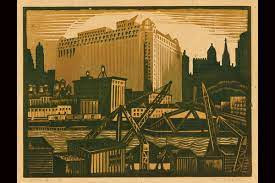Street art, often associated with urban environments, has emerged as a powerful medium of expression that transcends geographical boundaries and cultural differences. Far from being mere acts of vandalism, street art serves as a platform for artists to communicate their thoughts, feelings, and ideas to a diverse audience. In this article, we explore how street art has revolutionized urban landscapes and challenged social norms.
Introduction to Street Art
Street art encompasses a wide range of artistic forms, including graffiti, murals, stencils, and installations. Unlike traditional art forms confined to galleries and museums, street art is accessible to everyone, regardless of their socioeconomic background. From bustling city streets to quiet alleyways, street art can be found in various corners of the world, injecting color and creativity into otherwise mundane spaces.
Historical Context of Street Art
The roots of street art can be traced back to the graffiti movement of the 1960s and 1970s in New York City. What started as a form of urban rebellion soon evolved into a legitimate art form, with artists like Keith Haring and Jean-Michel Basquiat gaining recognition for their work on the streets. Over the years, street art has evolved and diversified, drawing inspiration from diverse cultural influences and artistic styles.
Evolution of Street Art Styles
Graffiti Art
Graffiti art, characterised by bold lettering and intricate designs, remains one of the most recognizable forms of street art. Graffiti artists often use spray paint to create elaborate murals on public walls, bridges, and buildings, transforming ordinary surfaces into vibrant works of art.
Stencil Art
Stencil art involves the use of stencils to create detailed images on various surfaces. This technique allows artists to reproduce their designs quickly and efficiently, making it a popular choice for street artists looking to make a statement.
Murals
Murals are large-scale paintings or artworks that cover entire walls or buildings. Often commissioned by local governments or businesses, murals serve as a means of beautifying urban spaces and conveying messages of unity, hope, and resilience.
Street Art's Impact on Urban Landscapes
Street art has the power to transform urban landscapes, turning neglected areas into vibrant cultural hubs. By adding color and creativity to public spaces, street art revitalizes communities and fosters a sense of pride and belonging among residents.
Street Art as a Form of Social Commentary
Beyond its aesthetic appeal, street art serves as a potent form of social commentary, addressing pressing issues such as politics, inequality, and environmental degradation. Through their artwork, street artists challenge the status quo and advocate for positive change in society.
The Influence of Landscape Art on Street Art
Incorporating elements of landscape art into street art not only adds depth and dimension to urban landscapes but also pays homage to the rich tradition of landscape art painting. Street artists often draw inspiration from natural settings, such as forests, mountains, and bodies of water, infusing their work with a sense of tranquility and harmony. By juxtaposing the chaos of the city with the serenity of nature, street artists create thought-provoking compositions that invite viewers to contemplate the interconnectedness of urban and rural environments.
The Importance of Art in Urban Renewal
Art, in all its forms, plays a pivotal role in urban renewal efforts, revitalizing neighborhoods and fostering community engagement. Street art, in particular, has emerged as a catalyst for positive change, transforming neglected spaces into vibrant cultural hubs that attract residents and tourists alike. By beautifying urban landscapes and infusing them with creativity and color, street art instills a sense of pride and ownership among local communities, inspiring them to take an active role in shaping the future of their neighborhoods.
Challenges Faced by Street Artists
Despite its growing popularity, street art continues to face numerous challenges, including legal restrictions, vandalism, and censorship. Many street artists struggle to obtain permits for their work, leading to conflicts with local authorities and property owners.
The Global Influence of Street Art
Street art has transcended national borders, with artists from around the world coming together to participate in international street art festivals and collaborations. Online platforms such as Instagram and Facebook have further amplified the reach of street art, allowing artists to share their work with a global audience.
Street Art's Role in Redefining Social Norms
Street art plays a crucial role in challenging conventional social norms and promoting diversity, inclusivity, and acceptance. By featuring diverse subjects and themes in their artwork, street artists encourage viewers to question their preconceived notions and embrace difference.
Read also about: Fundamentals of Art
Conclusion
In conclusion, street art represents a form of artistic expression that has the power to redefine urban landscapes and challenge social norms. From graffiti-covered alleyways to monumental murals, street art reflects the diversity and creativity of the communities in which it thrives. By embracing street art as a legitimate art form, we can foster greater appreciation for the beauty and complexity of our shared urban environments.
FAQs
Is street art legal?
While some forms of street art may be considered illegal graffiti, many cities have embraced street art as a form of public art and have designated spaces for artists to create legally.
How do street artists choose their locations?
Street artists often select locations based on visibility, accessibility, and the potential impact of their artwork on the surrounding community.
Can anyone become a street artist?
Yes, anyone with a passion for art and a willingness to take creative risks can become a street artist. However, it's essential to respect local laws and regulations governing street art.
What materials do street artists use?
Street artists use a variety of materials, including spray paint, stencils, acrylics, and wheatpaste, depending on their preferred style and technique.
How can I support street artists?
You can support street artists by attending local art events, purchasing their artwork, or following them on social media to help promote their work to a wider audience.

